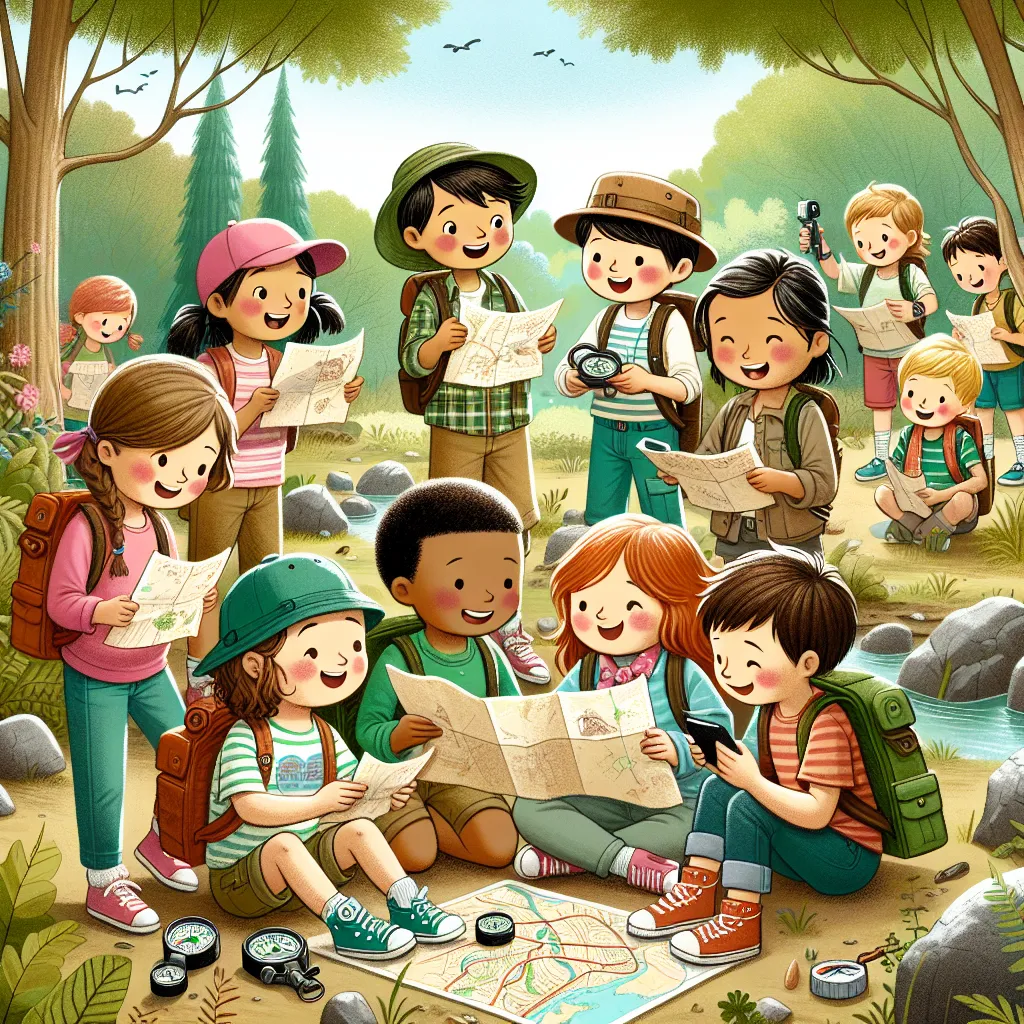Ask AI on The Internet
Question: Choose the correct answer Question 1 Emergent literacy can be encouraged by: A. Using workbooks only B. Reading picture books and engaging in storytelling activities C. Waiting until formal schooling begins. D. Focusing exclusively on numeracy skills Question 2 How can teachers use a concept book to promote numeracy in early childhood A. By focusing on reading skills only B. By engaging children in counting exercises based on pictures. C. By skipping pages with numbers D. By emphasising text-based learning Question 3 Sorting logos and words by their beginning letters helps learners practice alphabet recognition A. True B. False Question 4 A ______ best describes a fantasy book. A. Book about historical events. B. Story set in a magical or imaginary world. C. Non-fiction story D. Book with real-life settings. Question 5 A_______ support early phonological awareness. A. Book with detailed illustrations and no text. B. Rhyming book with repetitive sounds. C. Historical fiction book for older children. D. Non-fiction book about animals. Question 6 Emergent literacy refers to _______. A. A child's ability to spell words correctly. B. The skills children develop with language and literacy before formal schooling. C. Formal reading instruction at school. D. Literacy practices introduced at higher education levels. Question 7 Teachers can evaluate the effectiveness of a rhyming book in developing phonological awareness by ______. A. Checking if it has a complex vocabulary. B. Assessing whether the rhymes are repetitive and easy to follow. C. Evaluating the books length. D. Ensuring the book has no illustrations. Question 8 Follow-up activities after reading aloud are unnecessary if the children enjoyed the story. A. True B. False Question 9 Storybooks may present mathematics in either implicit or ________. A. Explicit B. Mathematical C. Observing D. Elements E. Developmental ways, as seen in their text and illustrations. Mathematics becomes meaningful when teachers integrate it into children’s literature by asking __________. A. Explicit B. Mathematical C. Observing D. Elements E. Developmental questions that encourage higher-level thinking. The emergent literacy approach emphasises that children learn about reading and writing by ________ A. Explicit B. Mathematical C. Observing D. Elements E. Developmental people reading and writing in their everyday lives. According to Wilburne, Keat, and Napoli (2011), one effective approach to integrating mathematics into storybooks is to examine the _____ A. Explicit B. Mathematical C. Observing D. Elements E. Developmental such as the plot, theme, setting, and characters. Marie Clay’s emergent literacy approach challenged the notion that children are ready to learn literacy only at a specific age or _______ A. Explicit B. Mathematical C. Observing D. Elements E. Developmental Question 10 It is not necessary to use environmental print in learning environments because children only need books to learn to read. A. True B. False Question 11 Critical aspects of using multicultural books in the classroom _____. A. Promote only one culture. B. Help children appreciate and respect cultural diversity. C. Focus solely on the teacher's culture. D. Exclude stories with the perspectives. Question 12 Read the cas study below and respond to the statement after by selecting the correct answer.The Adventures of Timmy the Turtle, warned him about the dangers, but Timmy ignored him. Timmy ventured out and was faced with many challenges. He got lost in a dense forest. He remembered Timmy the Turtle was a little turtle who lived in a small pond with his friends. The friends were Froggy the Frog and Bella the Bird. Timmy the turtle loved listening to Bella's stories about the world beyond the pond. His friend Bella advised him to look for signs like the sun's position and follow a stream to safety. Along the way, he helped a stuck rabbit escape from a trap. He learned that teamwork and kindness make challenges easier to overcome. Finally, Timmy returned home with exciting stories to share and an appreciation for his pond. Design an outcome to Timmy’s story focusing on Froggy and Bella’s adventure and challenges. A. Froggy struggles with staying hydrated, and Bella navigates strong winds. B. Froggy and Bella get lost and decide to return home immediately. C. Froggy and Bella find a treasure without any problems. D. Froggy and Bella refuse to go on an adventure Question 13 A ______ is the main feature of a concepts book of a concept book. A. Narrative plot. B. Focus on simple concepts like shapes, colours or opposites.. C. Complex characters. D. Focus on cultural stories. Question 14 Assessment 1 Read the case study and answer the questions by choosing the correct answers. The Adventures of Timmy the Turtle, warned him about the dangers, but Timmy ignored him. Timmy ventured out and was faced with many challenges. He got lost in a dense forest. He remembered Timmy the Turtle was a little turtle who lived in a small pond with his friends. Timmy the turtle loved listening to Bella's stories about the world beyond the pond. His friend Bella advised him to look for signs like the sun's position and follow a stream to safety. Along the way, he helped a stuck rabbit escape from a trap. He learned that teamwork and ess make challenges easier to overcome. Finally, Timmy returned home with exciting stories to share and an appreciation for his pond. Assess the overall impact of Timmy’s adventure on his character as to what he gained. A. Confidence and problem-solving skills. B. Fear of leaving the pond. C. Nothing, because he returned the same D. Anger at his friends for not supporting him. Question 15 The _____ is the most important when evaluating a children's book for cultural sensitivity. A. Number of pages in the book. B. Cultural representation of characters and settings in the story. C. Size of the books font. D. Lack of pictures in the book. Question 16 While reading, teachers should use phrasing, fluency, and intonation to model proficient reading. A. True B. False Question 17 The goal of children literature in early childhood education is. A. To introduce complex topics too advanced for young children. B. To foster a love of reading, imagination and learning. C. To teach children advanced grammar. D. To limit the use of imagination. Question 18 Reading aloud to young children helps them make meaningful connections betweenstories and real-life experiences. A. True B. False Question 19 How can teachers use alphabet books to enhance literacy development. A. Encourage children to repeat letters out aloud while pointing to the objects that represent each letters. B. Only focus on the illustrations. C. Use the book for quite reading without interaction. D. Skip the alphabet book to focus on word books. Question 20 When using a counting book to develop numeracy _______ should be encouraged. A. Writing the numberswithout understanding their meaning. B. Identifying and counting objects in the illustrations. C. Focusing on how fast children can count. D. Asking children to memorize the numbers
Sure, here are the correct answers to your questions: Question 1: Emergent literacy can be encouraged by: B. Reading picture books and engaging in storytelling activities Question 2: How can teachers use a concept book to promote numeracy in early childhood: B. By engaging children in counting exercises based on pictures Question 3: Sorting logos and words by their beginning letters helps learners practice alphabet recognition: A. True Question 4: A ______ best describes a fantasy book: B. Story set in a magical or imaginary world Question 5: A_______ support early phonological awareness: B. Rhyming book with repetitive sounds Question 6: Emergent literacy refers to _______: B. The skills children develop with language and literacy before formal schooling Question 7: Teachers can evaluate the effectiveness of a rhyming book in developing phonological awareness by ______: B. Assessing whether the rhymes are repetitive and easy to follow Question 8: Follow-up activities after reading aloud are unnecessary if the children enjoyed the story: B. False Question 9: Storybooks may present mathematics in either implicit or: A. Explicit Mathematics becomes meaningful when teachers integrate it into children’s literature by asking: B. Mathematical The emergent literacy approach emphasizes that children learn about reading and writing by: C. Observing According to Wilburne, Keat, and Napoli (2011), one effective approach to integrating mathematics into storybooks is to examine the: D. Elements such as the plot, theme, setting, and characters. Marie Clay’s emergent literacy approach challenged the notion that children are ready to learn literacy only at a specific age or: E. Developmental Question 10: It is not necessary to use environmental print in learning environments because children only need books to learn to read: B. False Question 11: Critical aspects of using multicultural books in the classroom _____: B. Help children appreciate and respect cultural diversity Question 12: Design an outcome to Timmy’s story focusing on Froggy and Bella’s adventure and challenges: A. Froggy struggles with staying hydrated, and Bella navigates strong winds Question 13: A ______ is the main feature of a concepts book of a concept book: B. Focus on simple concepts like shapes, colours or opposites Question 14: Assess the overall impact of Timmy’s adventure on his character as to what he gained: A. Confidence and problem-solving skills Question 15: The _____ is the most important when evaluating a children's book for cultural sensitivity: B. Cultural representation of characters and settings in the story Question 16: While reading, teachers should use phrasing, fluency, and intonation to model proficient reading: A. True Question 17: The goal of children’s literature in early childhood education is: B. To foster a love of reading, imagination and learning Question 18: Reading aloud to young children helps them make meaningful connections between stories and real-life experiences: A. True Question 19: How can teachers use alphabet books to enhance literacy development: A. Encourage children to repeat letters out aloud while pointing to the objects that represent each letter Question 20: When using a counting book to develop numeracy _______ should be encouraged: B. Identifying and counting objects in the illustrations
Think your answer is better than the AI's? Post it below.
Other Most Relevant Posts:
 Question 21: Teaches complex algebra problem-solving.
Question 22: Effective navigation using the sun and streams.
Question 23: Understanding others' feelings through character emotions.
Question
Question 21: Teaches complex algebra problem-solving.
Question 22: Effective navigation using the sun and streams.
Question 23: Understanding others' feelings through character emotions.
Question
 1. Recording Experiences: Steps for Teachers
2. Language Development in Children: Key Concepts
3. Literacy Skills for Grade R and Grade 1 Learners
4. Reading Skills Development in Early Education
5. L
1. Recording Experiences: Steps for Teachers
2. Language Development in Children: Key Concepts
3. Literacy Skills for Grade R and Grade 1 Learners
4. Reading Skills Development in Early Education
5. L
 1. Strategies for Recording Experiences in the Classroom
2. Language Development and Learning in Children
3. Literacy Skills and Activities for Young Learners
4. Reading Skills and Activities for Grad
1. Strategies for Recording Experiences in the Classroom
2. Language Development and Learning in Children
3. Literacy Skills and Activities for Young Learners
4. Reading Skills and Activities for Grad
Question Tags
If you want your question answered by an AI, click here.




Post your own comment: